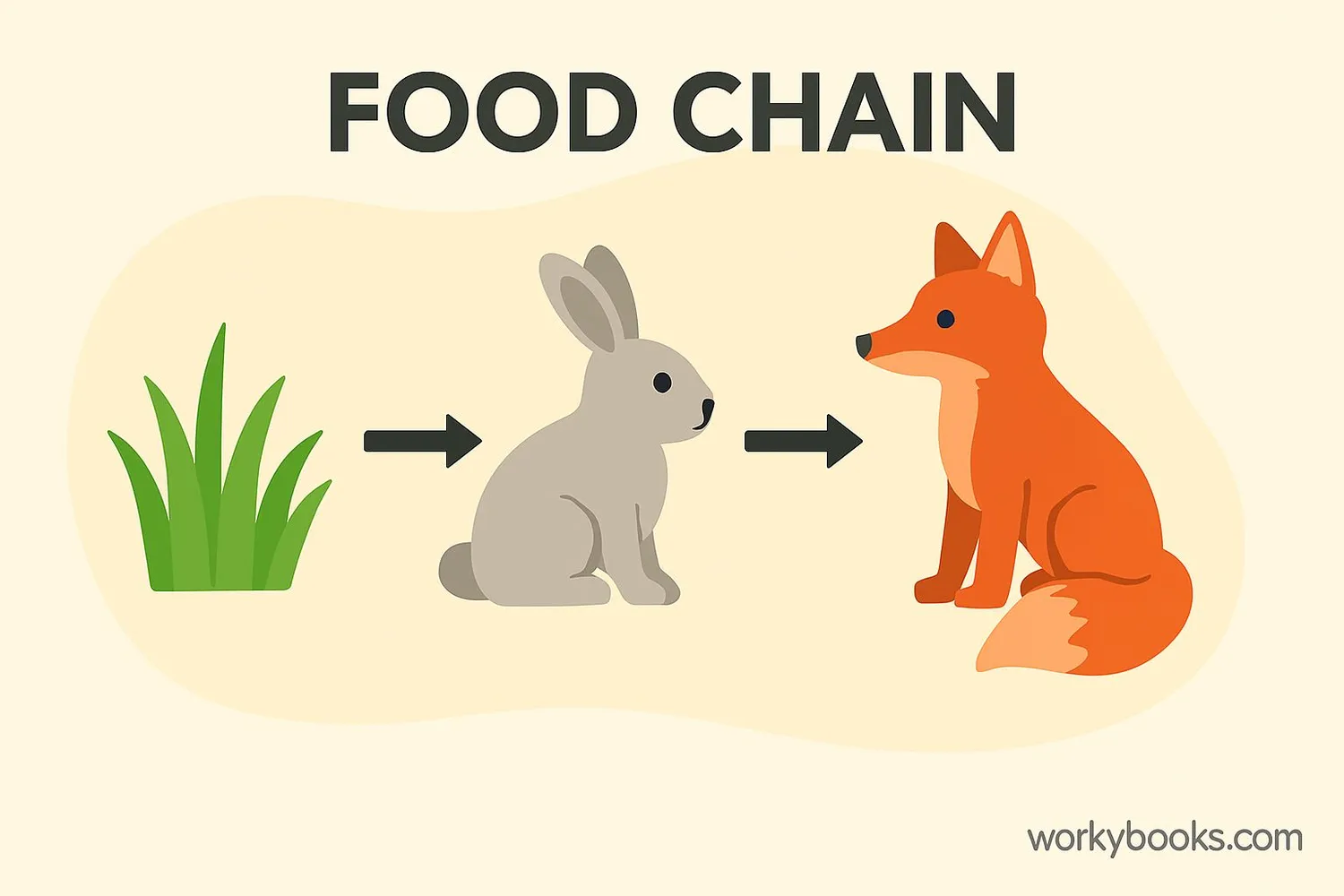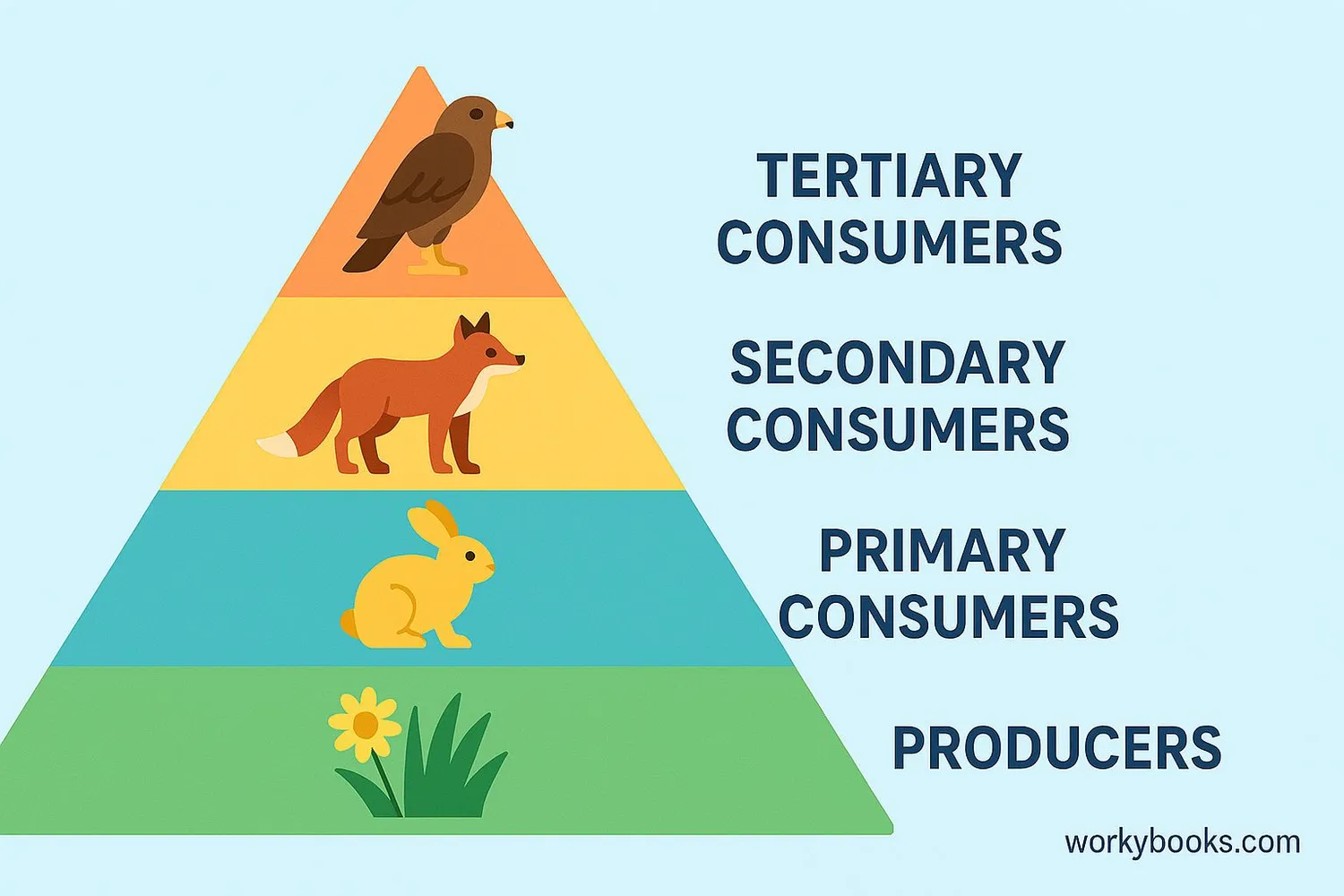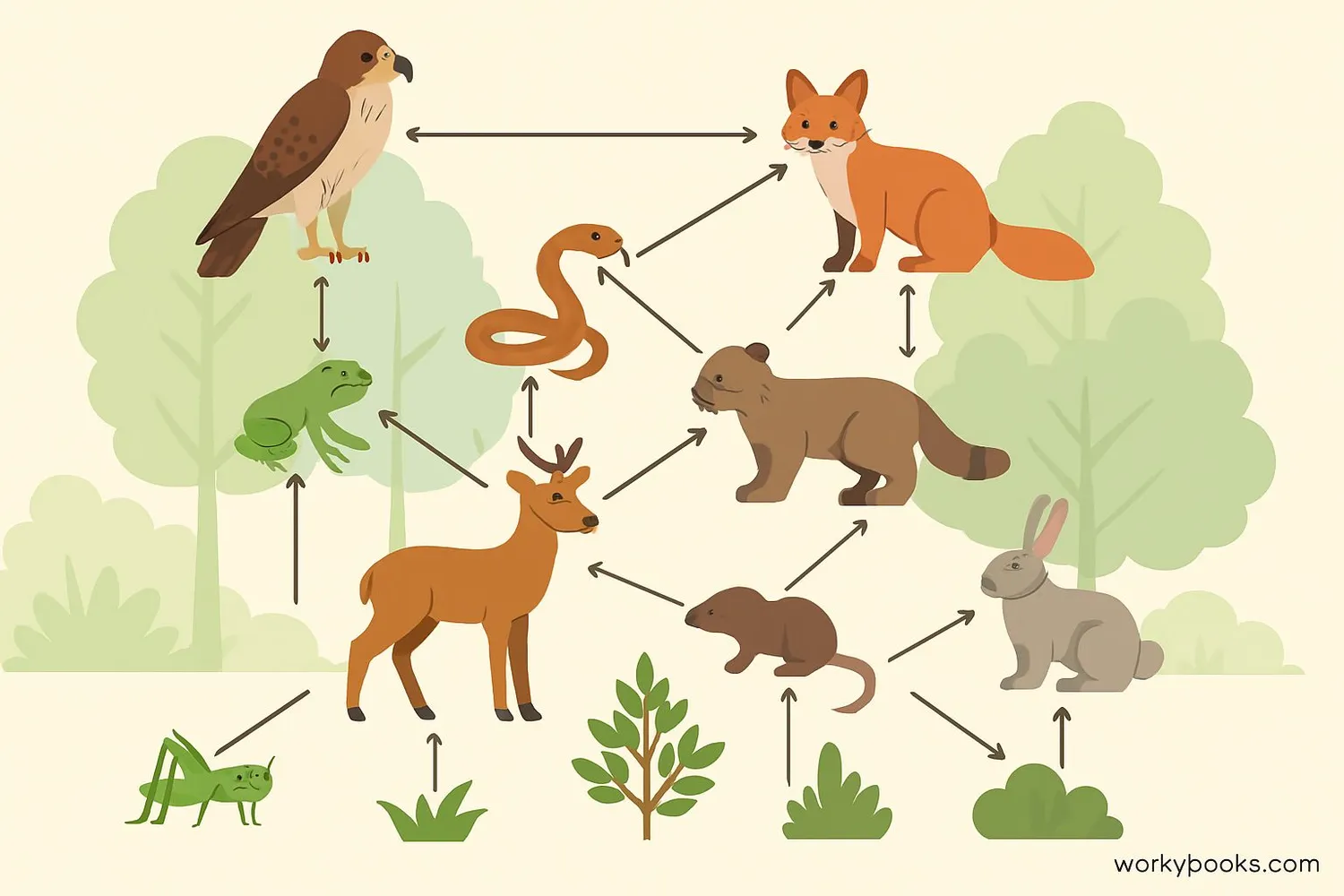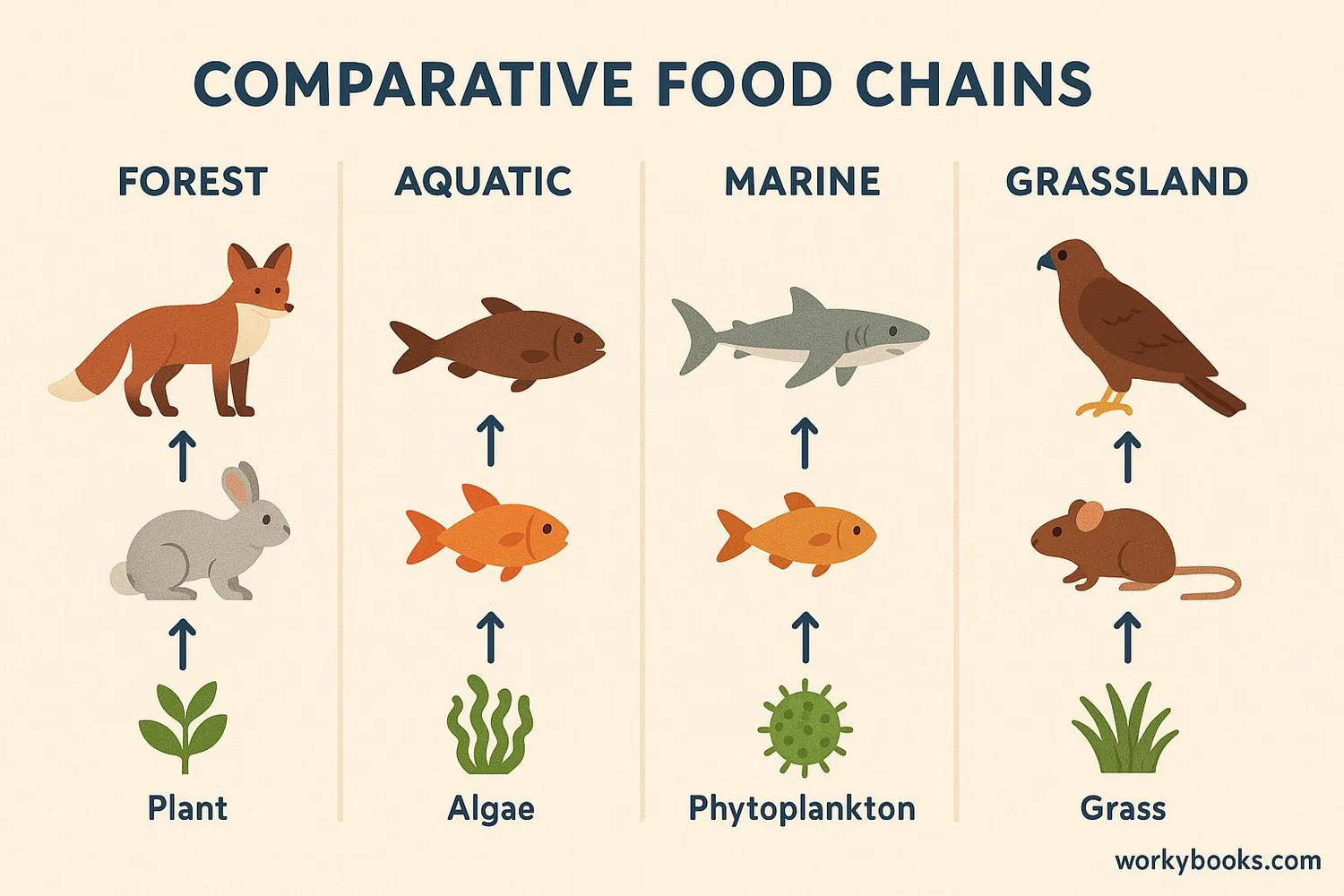Food Chain - Definition, Examples, Quiz, FAQ, Trivia
Discover how energy flows through ecosystems from producers to consumers
What is a Food Chain?

A food chain shows how energy moves from one living thing to another in an ecosystem. It always starts with plants that make their own food from sunlight, and then moves to animals that eat plants or other animals.
Think of it as nature's energy transfer system! Plants capture energy from the sun, herbivores eat plants to get that energy, and carnivores eat herbivores. This flow of energy connects all living things.
Energy Fact!
Only about 10% of energy moves from one level of the food chain to the next. The rest is used for living or lost as heat!
Parts of a Food Chain

Every food chain has several important parts that work together:
Producers
Plants that make their own food through photosynthesis
Primary Consumers
Herbivores that eat plants (like rabbits or grasshoppers)
Secondary Consumers
Carnivores that eat herbivores (like frogs or snakes)
Tertiary Consumers
Top predators that eat other carnivores (like hawks or lions)
Decomposers
Organisms that break down dead matter (like fungi and bacteria)
These different levels are called trophic levels. Energy flows from the sun to producers, then through consumers, and finally to decomposers that return nutrients to the soil.
Decomposers are Essential!
Without decomposers, nutrients would get trapped in dead organisms and ecosystems would collapse!
Food Webs

In nature, food chains are rarely simple straight lines. Instead, they connect to form complex food webs where each animal might eat several types of food and be eaten by several predators.
Food webs show how all food chains in an ecosystem are connected. This complexity makes ecosystems more stable because if one food source disappears, animals have alternatives.
Sun
Grass
Rabbit
Fox
Fungi
This simple food chain becomes part of a larger food web when we consider that rabbits also eat other plants, foxes eat other animals, and fungi decompose multiple organisms.
Food Chain Examples
Food chains exist in every ecosystem on Earth. Here are some common examples:
Forest Food Chain
Sun → Oak Tree → Caterpillar → Robin → Hawk
Aquatic Food Chain
Sun → Algae → Minnow → Bass → Osprey
Marine Food Chain
Sun → Phytoplankton → Krill → Penguin → Leopard Seal
Grassland Food Chain
Sun → Grass → Grasshopper → Field Mouse → Owl

Notice how all food chains start with the sun and producers, then move through different levels of consumers. The number of levels varies by ecosystem, but energy always flows in the same direction!
Food Chain Quiz
Test your knowledge with this food chain quiz! Answer all 5 questions to see how much you've learned.
Frequently Asked Questions
Here are answers to some common questions about food chains:
Food Chain Trivia
Discover some amazing facts about food chains!
Longest Food Chain
The longest known food chain has 7 links: phytoplankton → zooplankton → small fish → squid → seal → killer whale → human!
Energy Loss
It takes about 100 kg of plants to make just 10 kg of herbivore, and only 1 kg of carnivore! That's why there are fewer predators than prey.
Human Impact
Humans have shortened many food chains by eating more plants and fewer animals. This is more energy efficient!
Deep Sea Chains
In deep ocean vents, food chains start with bacteria that use chemicals from Earth's crust instead of sunlight!


